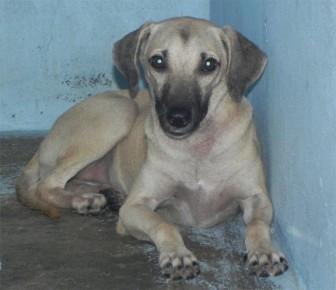Continued
Last week we dealt with the whole issue of the estrus cycle in dogs. One should understand that this ‘heat‘ cycle is influenced, to a large degree, by the hormones in the animal’s body. Hormones are chemical secretions produced by specific cells and transported by body fluids (in this case, blood) to other cells in the other parts of the body where their influence is exhibited. For example, a hormone produced in a part of the brain can have an influence on the activity of the ovaries of the reproductive system. Let’s look at these influences in more detail. As before, we will rely, to a large extent, on a text prepared by Drs Carlson and Giffin which is pretty easily understood and not encumbered by great and profound scientific utterances.
Pituitary influence
The heat cycle begins when the pituitary gland (in the brain) releases FSH (Follicle Stimulating Hormone) which causes the ovaries (female reproductive organs which produce eggs and hormones needed for the reproduction of offspring) to grow the egg follicles (small sacs) and begin to make estrogen (a sex hormone). Under the influence of another pituitary hormone called LH (Lutenizing Hormone) the egg follicle ruptures and releases eggs into the fallopian tubes (oviducts) which connect the ovaries with the womb (uterus).
When progesterone (for example, in the birth control pill Ovaban) is given during the first three days of proestrus (see last week’s TPC), it blocks the release of pituitary FSH and aborts the heat cycle.

At a later date, I will deal with the use of hormones as contraceptives when I write about birth control.
Ovarian influence
Estrogen from the ovary causes the vulva (the flaps on the outside of the vagina) to become swollen and turgid. It also affects the lining of the uterus (womb) and promotes a discharge. These are the first signs that the bitch is going into heat (proestrus).Some bitches have a very light pinkish to yellow discharge early in proestrus. If you are not sure whether your bitch is going into heat, wipe a clean toilet tissue across her vulva. If you see a pinkish colour on the tissue paper, then you may conclude with a large degree of certainty that she is in early heat.

As the egg follicles mature, they make less estrogen and begin to produce progesterone. This hormone makes the vulva soft and pliable, making intromission by the male possible. These vulvar changes occur late in proestrus or early in estrus (when the bitch is commencing her true heat period within the cycle).
After the eggs have been shed from the ovary; they must mature in the female for 72 hours before they can combine with the sperm. Sperm, on the other hand, can survive in the female for up to seven days. Fertilisation occurs mainly (but not only) in the Fallopian tubes (oviducts) which lead from the ovary to the uterus. Fertilised eggs implant in the uterus on the 14th to 18th day.
An important function of the progesterone is to prepare the lining of the uterus to receive the fertilized eggs. Such preparation can be blocked by giving an injection of estrogen within seven days of mating (the mismate shot) – preferably within the first 48 hours. I would strongly suggest that you discuss this hormonal intervention (injection) with your vet, because this interference is not without jeopardy.
The area from which the egg sprang (from the ruptured follicle) now becomes a small cystic structure (called the corpus luteum); its function is to continue to make progesterone and support the pregnancy. Removal of the ovaries, or inadequate output of progesterone from the ovaries during pregnancy, will result in abortion.
OK, enough of this science today. We needed to document this process. Next week we’ll deal with the more down to earth issue of ‘when to breed‘ exactly.
Please implement disease preventative measures (vaccinations, routine dewormings, monthly anti-heartworm medication, etc) and adopt-a-pet from the GSPCA’s Animal Clinic and Shelter at Robb Street and Orange Walk, if you have the wherewithal to care well for the animals. Do not stray your unwanted pets, take them to the GSPCA’s Clinic and Shelter instead. If you do not wish your pet to have puppies or kittens, you may exploit the GSPCA’s free spay and neutering programme. If you see anyone being cruel to an animal, or if you need any technical information, please get in touch with the Clinic and Shelter by calling 226-4237.





